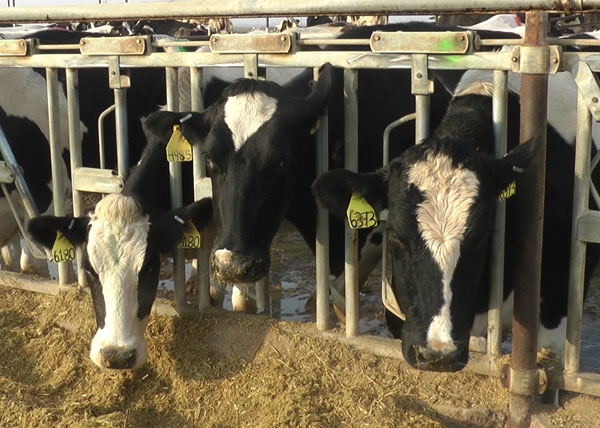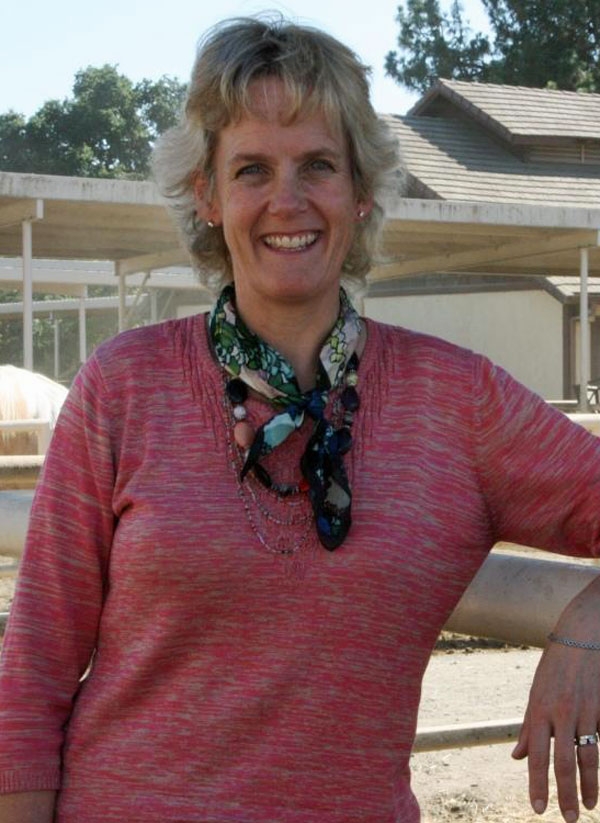
For the most part, dairy operators select cattle for breeding that have the highest genetic potential for milk production, health, structural soundness and fertility. The introduction in the 1940s of artificial insemination from bulls that were proven to father productive daughters resulted in dramatic changes to the industry, according to geneticist Alison Van Eenennaam, UC Cooperative Extension specialist with UC Agriculture and Natural Resources.
“In the U.S., we used to milk 26 million cattle, now there are 9 million, and despite that reduction we produce one and a half times more milk for American consumers,” said Van Eenennaam, who is based in the Department of Animal Science at UC Davis. “The carbon footprint of a glass of milk today is about one-third of what it was in the 1950s.”
Genomics does not involve genetically modified organisms (GMOs). It involves the sequencing and analysis of the cow genome. Mapping of the cow genome, completed in 2009, has provided scientists with information on the 3 billion base pairs on cattle DNA from which they can conduct research trials to tease out which pairs are responsible for which traits. The process is so complex that research will continue for decades, but progress is already reaping rewards for the dairy industry.

“There's almost always an inverse correlation between production and reproduction,” said Van Eenennaam. “If you don't include fertility in your breeding program, it will decline as you select for more productive cows. Genomics allows us to make selection more balanced and include all of the traits that are of importance to dairy production.”
Scientists are looking for bulls with the genetic markers for fertility combined with the markers for high milk yield. The combination of markers are genotypes.
Identifying bulls with the optimal genotypes is the first step. Next, the producers must decide how to use the information, according to Joe Dalton, a geneticist at the Center for Reproduction Biology at the University of Idaho. Dalton is a member of a team that received a grant from USDA to spread the word about dairy genomics to producers around the U.S.
Dalton suggested four potential ways dairy operators can use information about dairy cattle genotypes to optimally manage the genetics of their herds:
- To sell the animals
- To make breeding decisions
- To identify an animal's parentage
- To make informed purchasing decisions
Van Eenennaam is working with cattle genomics to address the animals' susceptibility to respiratory disease. When cows catch cold, the viruses can weaken the immune system. Opportunistic bacterial infections can settle in the lungs and result in pneumonia, which requires expensive treatment with antibiotics and can even cause premature death.
“We will need to prevent these diseases in the future,” Van Eenennaam said. “Cattle that are sick with pneumonia are frequently treated with antibiotics. Breeding in resistance to respiratory disease will reduce that.”
Van Eenennaam and her collaborators took DNA samples from 1,000 California dairy calves suffering from respiratory disease and their immediate neighbors who remained healthy. They compared the DNA profiles of sick calves with healthy calves to identify regions in the genome that differed between the groups.
Her research has shown that 21 percent of susceptibility to respiratory illness can be attributed to the genetics of the calves.
“More than 100 genomic regions were significantly associated with respiratory disease,” Van Eenennaam said. “That supports the idea that many genes are associated with susceptibility to the disease.”
In time, respiratory disease susceptibility can be included in the index that producers consider when selecting the genetics of the cows they milk on their farms.
This research project is being funded by the USDA Agriculture and Food Research Initiative.
An initiative to enhance competitive and sustainable food systems is part of UC Agriculture and Natural Resources Strategic Vision 2025.